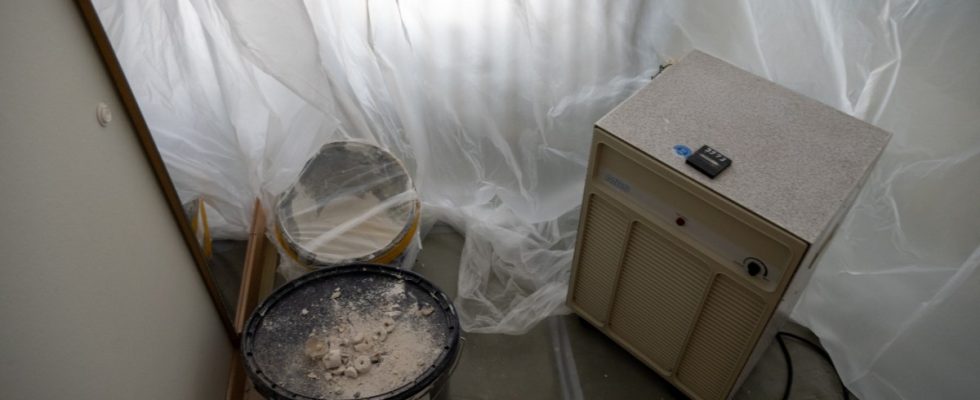Julian has trouble falling asleep in the evening. For a few weeks now. The three-year-old has lost his inner peace and keeps saying to his dad: “I want to go back.” Back to the premises of the daycare center at Feilitzschstrasse 6, which he knows so well and where he had all his friends around him.
Parents’ association chairman Jens Detmering knows that many girls and boys who attend the municipal facility in Schwabing are like Julian. In mid-December, the children and their teachers had to leave their old home because elevated mold levels were measured in the sleeping area. The reason: water damage presumably caused by a leak in the fitness center one floor above. “This water damage has been going on since 2017,” reports Detmering. But the corner was repeatedly painted over. “And several times.”
The municipality is taking care of the problem, but the education department is only the tenant of the premises and therefore cannot carry out any structural work on the building itself. The authority rejects the accusation that it has done nothing since 2017. A spokeswoman says that there was moisture on a ceiling of the crèche for the first time in 2017, and also in 2019 and 2022. “In each of these cases, the masonry was dried using equipment, damaged areas were removed and restored using drywall before the walls were painted again. ” Mold formation was “not an issue” during these years.
In 2023, water damage occurred again – with subsequent “slightly increased measured values” of mold spores. The crèche was then relocated to protect the children and the team of educators from possible health risks. Since then, the spokeswoman assures, “the repair of the Feilitzschstrasse crèche rooms has been pushed forward with priority by both the Department for Education and Sport and the property management.” The new property management is also working on a permanent solution to prevent future water damage to the crèche.
From the parents’ point of view, however, removing the mold doesn’t happen quickly enough. “I see this in my little one, he and the other children are suffering extremely under the current circumstances,” says Detmering. The children and the staff were divided between two other facilities on Bauhausplatz and Marianne-Brandt-Straße: While there were a maximum of 12 years old in the previous four groups, there are now significantly more little girls and boys in one group. And now, according to the chairman of the parents’ council, eight new children who were promised the place before the mold problem became known should also be settled in.
The daycare children have been relocated, their rooms on Feilitzschstrasse are empty.
(Photo: Catherina Hess)
“We fear that the children are being expected to do something that is difficult for them to cope with at a young age,” the parents’ council now writes in a letter to Mayor Dieter Reiter (SPD) and city school councilor Florian Kraus. In the past few months, the children have often been without a caregiver due to a lack of staff. Now that the new leader has changed many things for the better, progress is being slowed down again.
The renovation process will not be completed before the end of March
The parent representatives receive support from local politicians. The Schwabing-Freimann district committee calls on the municipality to quickly find justifiable solutions for the well-being of the children. This includes providing additional rooms to enable smaller groups again and offering alternative care places for the new children who have not yet been admitted in other city facilities. Above all, there must be a realistic timetable for the return to Feilitzschstrasse. The current short planning horizons with repeated extensions are “grueling” and make the already stressful situation even more difficult for families and educators.
The education department expects that the restructuring process will not be completed “before the end of March”. Three of the four relaxation rooms in which mold spores were measured have already been repaired, said the spokeswoman. After the infrared dehumidification of the last rest room has been completed, the plan is to thoroughly clean and disinfect the crib. Finally, the mold contamination needs to be tested again. If the test is negative, the crèche could be released for operation again.

